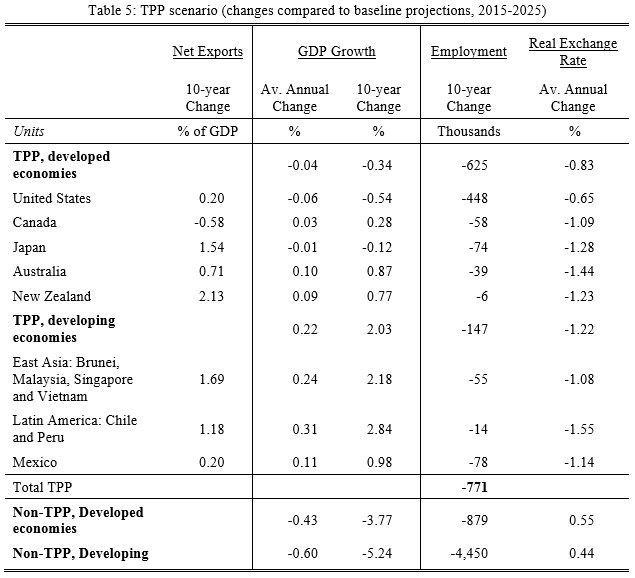Earlier this week, Prime Minister Malcolm Turnbull addressed the United States Chamber of Commerce, where he claimed that the recently signed Trans-Pacific Partnership (TPP) trade agreement was critically important for growth across the Asia-Pacific:
“We have championed the Trans-Pacific Partnership and we urge your Congress to do so too.
“If we want to maintain our high-wage, generous-social-welfare-net, first-world economies then we have to be more innovative, more entrepreneurial, we have to look at volatility and disruption and treat it as an opportunity.”
He said the deal supported the opening of markets, better transparency, and would help encourage broader political and economic reform.
Unfortunately, new research on the TPP does not support Turnbull’s oft-used claim that the deal will be “transformative” for economies.
The World Bank has released new modelling that takes account of all aspects of the proposed deal – both trade and non-trade related – and has found that “by 2030, the TPP will raise member country GDP by 0.4-10 percent, and by 1.1 percent, on a GDP-weighted average basis”. This might sound impressive, but these are cumulative increases to 2030.
And here’s the break-down by country, which shows that Australia would receive a cumulative bump-up in GDP of just 0.7% by 2030, or 0.07% extra growth annually if we assume that the agreement comes into place by 2020 [special thanks to Techdirt for the summary analysis]:
- Vietnam – 10%
- Malaysia – 8%
- Brunei – 5%
- New Zealand – 3.1%
- Singapore – 3%
- Japan – 2.7%
- Peru – 2.1%
- Mexico – 1.4%
- Canada – 1.2%
- Chile – 1%
- Australia – 0.7%
- US – 0.4%
I know what you are thinking: “growth is growth, so stop being a naysayer”. However, other modelling by the Global Development and Environment Institute at Tufts University has found that the TPP “would lead to losses in employment and increases in inequality”, with employment in Australia contracting by 39,000 jobs [special thanks to BoingBoing.net for the heads-up]:

The modelling is said to use a “realistic” set of assumptions and is based on the widely accepted United Nations Global Policy Model (GPM). According to the report:
TPP would lead to employment losses in all countries, with a total of 771,000 lost jobs. The United States would be the hardest hit, with a loss of 448,000 jobs. Developing economies participating in the agreement would also suffer employment losses, as higher competitive pressures force them to curtail labor incomes and increase production for export.
TPP would lead to higher inequality, as measured by changes in the labor share of national income. The authors foresee competitive pressures on labor income combining with employment losses to push labor shares lower, redistributing income from labor to capital in all countries. In the United States, this would exacerbate a multi-decade downward trend.
TPP would lead to losses in GDP and employment in non-TPP countries. In large part, the loss in GDP (3.77 percent) and employment (879,000) among non-TPP developed countries would be driven by losses in Europe, while developing country losses in GDP (5.24%) and employment (4.45 million) reflect projected losses in China and India.
Some agreement, hey!

